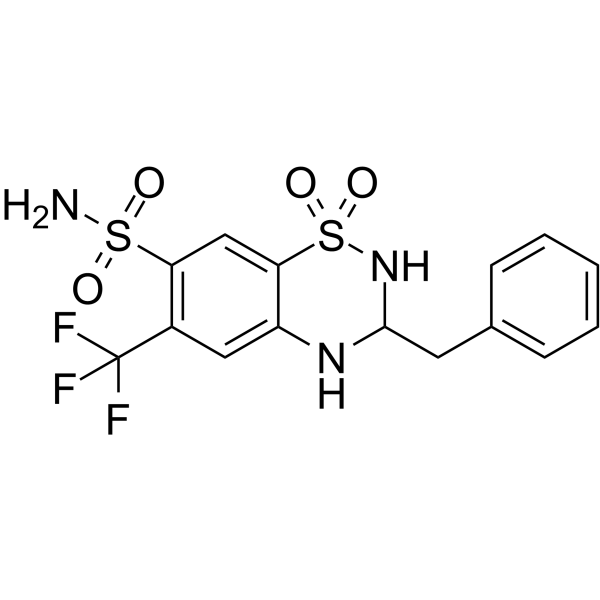Effect of Irbesartan treatment on plasma and urinary markers of protein damage in patients with type 2 diabetes and microalbuminuria.
Naila Rabbani, Antonysunil Adaikalakoteswari, Kasper Rossing, Peter Rossing, Lise Tarnow, Hans-Henrik Parving, Paul J Thornalley
文献索引:Amino Acids 42(5) , 1627-39, (2012)
全文:HTML全文
摘要
The aim of this study was to assess the effect of the angiotensin II receptor blocker Irbesartan on protein damage by glycation, oxidation and nitration in patients with type 2 diabetes and microalbuminuria. In a double-masked randomised crossover trial of 52 hypertensive type 2 diabetic patients, antihypertensive treatment was replaced with bendroflumethiazide. After 2-months wash-out, patients were treated randomly with Irbesartan 300, 600, and 900 mg o.d., each dose for 2 months in a three-way crossover study. Glycation, oxidation and nitration adduct residues in plasma protein and related urinary free adducts were determined by stable isotopic dilution analysis liquid chromatography-tandem mass spectrometry. Treatment with Irbesartan decreased urinary excretion of advanced glycation endproducts (AGEs)--methylglyoxal- and glyoxal-derived hydroimidazolones, MG-H1 and G-H1. Urinary AGEs were decreased by 30-32%. In plasma protein, treatment with Irbesartan increased content of glycation adducts Nε-fructosyl-lysine, AGEs Nε-carboxymethyl-lysine, Nε-carboxyethyl-lysine and pentosidine, and also increased content of oxidation markers N-formylkynurenine and dityrosine. This was attributed to decreased clearance of plasma protein modified by Nε-fructosyl-lysine and oxidative markers through the glomerular filter tightened by Irbesartan treatment. Treatment of patients with type 2 diabetes with Irbesartan decreased urinary excretion of MG-H1, G-H1 and 3-NT, which may result from decreased exposure to these AGEs. This is likely achieved by blocking angiotensin II signalling and related down-regulation of glyoxalase 1 and may contribute to health benefits of Irbesartan therapy.
相关化合物
| 结构式 | 名称/CAS号 | 分子式 | 全部文献 |
|---|---|---|---|
 |
苄氟噻嗪
CAS:73-48-3 |
C15H14F3N3O4S2 |
|
Ultra high performance supercritical fluid chromatography co...
2015-01-01 [Anal. Chim. Acta 853 , 637-46, (2014)] |
|
Ultra high performance supercritical fluid chromatography co...
2015-01-01 [Anal. Chim. Acta 853 , 647-59, (2014)] |
|
Binding of diuretic antihypertensive bendroflumethiazide to ...
2012-01-23 [Eur. J. Pharm. Sci. 45(1-2) , 195-200, (2012)] |
|
Mechanism of [m+h]+ formation in atmospheric pressure photoi...
2008-11-01 [J. Am. Soc. Mass Spectrom. 19(11) , 1579-89, (2008)] |
|
Potency of office blood pressure from hydrochlorothiazide an...
2012-09-01 [Hypertension 60(3) , e22; author reply e23, (2012)] |